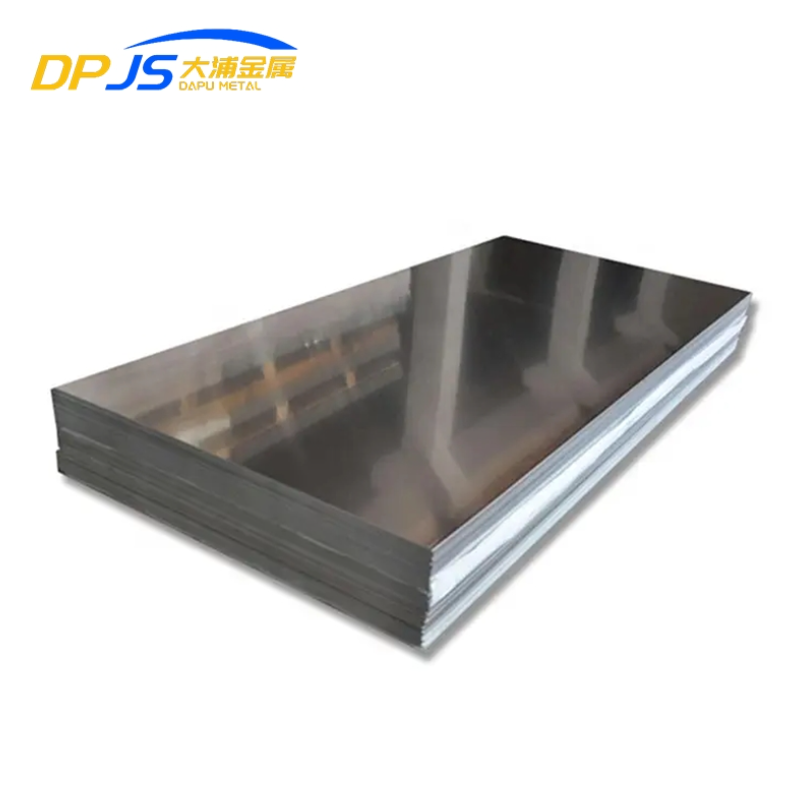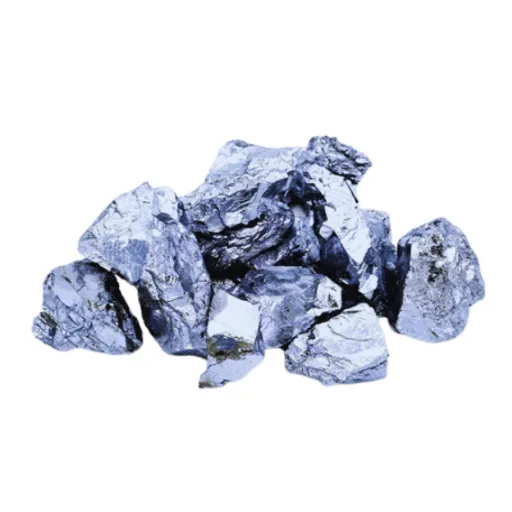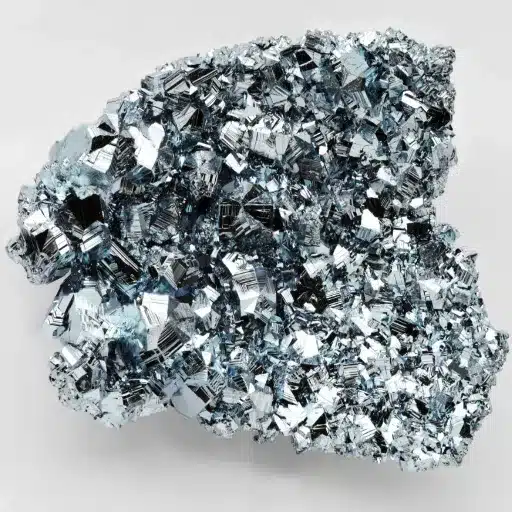One of the most versatile, durable, and aesthetically pleasing materials is stainless steel. It is, of course, available in an almost infinite variety of shapes and sizes. Among these, the 1/2 round stainless steel bar holds a special position, boasting attributes of strength, corrosion resistance, and an accurate shape for specialized usage. In construction, machining, or design, knowing about the properties and uses of this material can assist an application engineer in making a more informed decision. The article sheds light on important properties of the 1/2 round stainless steel bar and its wide usages, plus gives some guidelines for procuring good-quality materials for your needs.
Overview of Stainless Steel Round Bars
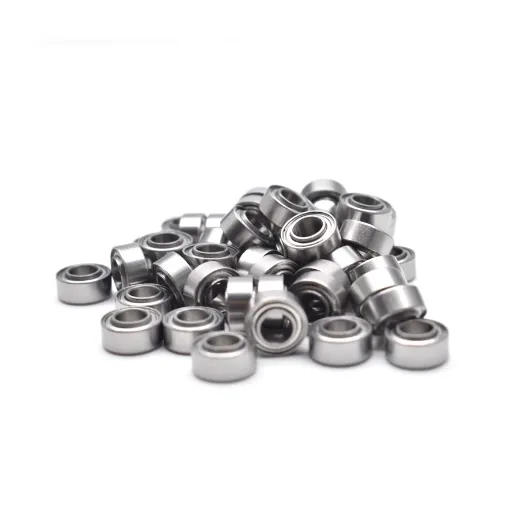
What is 1/2 Round Stainless Steel Bar?
A 1/2 round stainless steel bar is a semi-circular steel alloy product that combines the strength, durability, and corrosion resistance of stainless steel with the special half-round cross-sectional profile. This bar finds diverse industrial, structural, and ornamental applications because of its versatility and excellent material properties. Owing to its distinct profile, it comes in handy when one requires a flat plus curved surface for applications.
Primarily, 1/2 round stainless steel bars offer advantages that include rust and wear resistance, which make them ideal environments in which moisture, chemicals, and or extreme temperatures prevail. Their many uses in marine, construction, or architectural projects safeguard maximum durability and longevity. If polished, they can also form an elegant finish, thereby finding uses in either decorative or visible applications.
The best sources for good-quality 1/2 round stainless steel bars are trademarked and certified to ascertain that the materials conform to preset standards. Choosing the grade of stainless steel suitable for the application, be it 304 or 316, is therefore a priority. Consider size, finish, and the intended application so that the material satisfies the goals of both function and aesthetics.
Common Grades: 304 vs 316 Stainless Steel
However, while 316 remains popular in many varied process industries, 304 stainless steel tubes are extensively used for various engineering and home applications.
| Key Point | 304 | 316 |
|---|---|---|
| Corrosion | Standard resistance | High resistance |
| Molybdenum | None | 2-3% |
| Cost | Lower | Higher |
| Applications | General use | Marine, chemical |
| Strength | Moderate | High |
Properties of 304 Stainless Steel
Composition and Carbon Content
Due to reliability, versatility, and excellent corrosion resistance, 304 stainless steel is one of the most commonly manufactured grades for use across several industry sectors. The grade is composed mainly of chromium in the 18-20% range and nickel at 8-10.5%, with these metals generating the durable protective oxide layer. A moderately low carbon content, generally 0.08% at most, indicates enhanced resistance against intergranular corrosion following welding, thus becoming a good fit for applications requiring welding without compromising the long-term structural integrity of components.
Among the many qualities of 304 stainless steel, one is the retention of strength and corrosion resistance in an ample variety of conditions. Because it contains a balanced mixture of chromium and nickel, it gives extraordinary performance against oxidation and mild acid attacks and costs less than higher grades. Therefore, with its low carbon content, the carbide precipitation that can occur in heat treatments is avoided, making it suitable for applications that include food and medical processing equipment where sensitivity against contamination is important.
If more corrosive-resistant applications are required, especially in environments filled with chlorides—these being marine, chemical, or similar environments—a 316 stainless steel might be chosen. For general purposes, though, 304 remains the primary consideration due to its worthiness to be considered affordable and readily available and performing satisfactorily. Engineering and design knowledge regarding its composition and carbon content allows decisions to be made in favor of cost-effectiveness while adhering to safety standards and durability requirements priced against time.
Mechanical Properties and Weight Considerations
An excellent compromise between strong and ductile, 304 stainless steel finds its application in a wide variety of structural and fabrication purposes. With a tensile strength of around 515 MPa (megapascals) and a yield strength of 205 MPa, it does indeed offer good stresses resistance. The percentage elongation at break is close to 40%, which shows a high degree of ductility from the given capability of somewhat deforming before ultimate failure.
The material’s density is approximately 8.0 g/cm³ and contributes moderately to the weight, yet it reasonably retains the stability of the structural system. One of the major concerns in designing is picking something lighter than what is available for uses such as in the automobile or aerospace sectors. Compared to heavier materials, such as carbon steels, 304 stainless steel seems to provide a large degree of weight saving, corrosion resistance, and thus long life with low maintenance.
Furthermore, depending upon applications, desired properties could be obtained after some process treatments, for instance, cold working will allow hardening and strengthening of 304 stainless steel and thus be able to face severe service conditions better. The trade-off of weight and mechanical properties makes this steel beneficial for other applications in industries, such as architectural frameworks and industrial piping systems.
Good Corrosion Resistance: Why It Matters
The excellent resistance of 304 stainless steel against corrosion is another feature that favors its popularity in varied industrial applications. The material resists oxidation and rust even in atmospheres exposed to moisture, wind, and various chemical environments. Unlike ordinary steel, the chromium content in 304 stainless steel creates a passive film on its surface that resists corrosion with a touch of elegance.
This property is important in industries such as food processing, marine, and healthcare applications where the material contacts corrosive substances such as salts, acids, or cleaning agents. For instance, 304 stainless steel is popular in commercial kitchens for the manufacture of cookware, sinks, and countertops, where sanitation is required, but chemical attack from cleaning agents poses a threat. The material also keeps enjoying the shine in an atmosphere laden with moisture or rain, so it is used widely in architectural constructions and marine applications.
According to industry sources, the application of high-corrosion-resistance materials like 304 stainless steel will help curtail maintenance costs and extend product life, thus making it an environmentally favorable alternative economically wise in the long run.
Applications of 1/2 Round Stainless Steel Bars
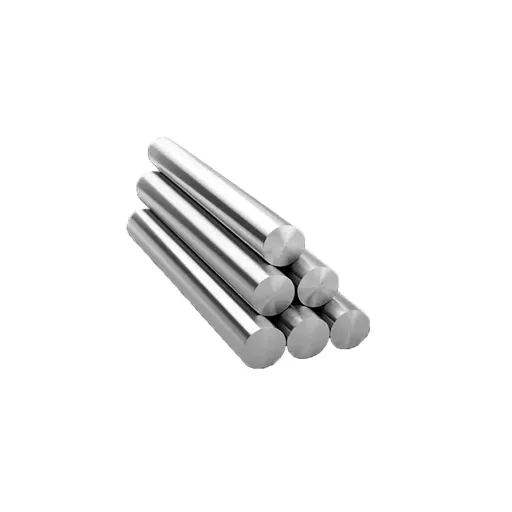
Industrial Uses and Fabrication Techniques
- Construction and Structural Support: 1/2 round stainless steel bars find extensive use in the construction industry for architectural frameworks, railings, and structural reinforcements. This is mostly because of their high tensile strength and corrosion resistance, which make them fit for long-term applications in buildings, bridges, and outdoor structures.
- Automotive Industry: In the automotive industry, these bars find usage in the manufacture of parts and systems such as exhaust systems, trims, and suspension. Their endurance to heat and adversities in the environment assures their excellent performance and reliability.
- Food and Beverage Equipment: Their non-reactive surface and conformance with stringent hygienic standards allow for the use of 1/2 round stainless steel bars in making food processing equipment, storage tanks, and kitchen appliances.
- Marine Applications: In fact, these bars are highly recommended in marine settings because of their moisture and saltwater corrosion resistance. Ship fittings, propeller shafts, and dock structures are common applications.
- Energy and Power Industries: Also, bars can be utilized in the energy industry, particularly in making components for power plants, pipe lines, and renewable energy systems. Their strength and ability to resist heat and pressure make them highly desirable.
Construction and Architectural Applications
Structural Frameworks
Reinforcement on structural frameworks in buildings has been widely carried out using stainless steel bars. Since they can support heavy loading and deteriorate less in environmental conditions, they have found application in skyscraper buildings, bridges, and industrial facilities.
Facades and Cladding
A somewhat elusive phrase for the layman: architects would describe a facade to be the exterior face of the building. Cladding is a second layer applied primarily for protection purposes. Stainless steel bars find use from the architectural point of view in construction facades and claddings for their modern look and weather resistance.
Handrails and Balustrades
The stainless steel bars aid the creation of strong handrails and balustrades to bear safety and support. They are preferred for both in public and private spaces as they offer good strength and require less maintenance.
Decorative Elements
Stainless steel bars find applications in decorative arts such as sculptures, trim accents, or other design elements for interior and exterior projects. The fact that they can also be moulded and polished greatly enhances their versatility when it comes to architectural applications.
Reinforced Concrete
To provide additional strength to concrete structures, stainless steel bars are embedded within concrete. Components obtained comprise very durable material used for foundations, columns, and slabs, notably at coastal environments or chemically aggressive environments.
Welding and Joining Methods
Welding and joining methods are essential processes in construction, manufacturing, and many engineering applications. These processes weld the materials together so that they can bear whatever pressure is applied and remain structurally sound. Five commonly used welding and joining methods are as follows, along with their applications and advantages:
- 1
Shielded Metal Arc Welding (SMAW): Also called stick welding, SMAW has become one of the most common welding techniques. It utilizes an electrode coated with flux to create a weld. This welding technique lends itself well to heavy industrial applications and construction work because of the ease with which it can be adapted to different working environments. - 2
Gas Tungsten Arc Welding (GTAW/TIG Welding): A tungsten electrode produces high-quality precise welding in TIG welding. Therefore, industries that require precision and finish, such as aerospace and automotive, apply this method. This is the best welding method for thin materials like stainless steel and nonferrous metals such as aluminum. - 3
Gas Metal Arc Welding (GMAW/MIG Welding): MIG welding employs a wire electrode that is pushed through the welding gun. A shielding gas is being used to shield the weld pool from contamination. Hence, its application is widespread in fabrication and manufacturing for its high welding speed and flexibility to a wide variety of materials from steel to aluminum. - 4
Flux Core Arc Welding (FCAW): Close to MIG welding, FCAW utilizes a continuous wire with flux in its core. It is a good welding method that can be used outdoors or in highly contaminated environments because the method does not require an external shielding gas. - 5
Resistance Spot Welding: A pair of metal surfaces clamped together with an electric current passed through their interface that generates heating so that surfaces are joined is called resistance spot welding. It is widely used in the automotive industry to provide a fast and reliable weld for joining body panels and other components.
Each one of these methods provides advantages that are selected according to the requirements of the specific job, the materials involved, and the work environment.
Sourcing and Stocking 1/2 Round Stainless Steel Bars
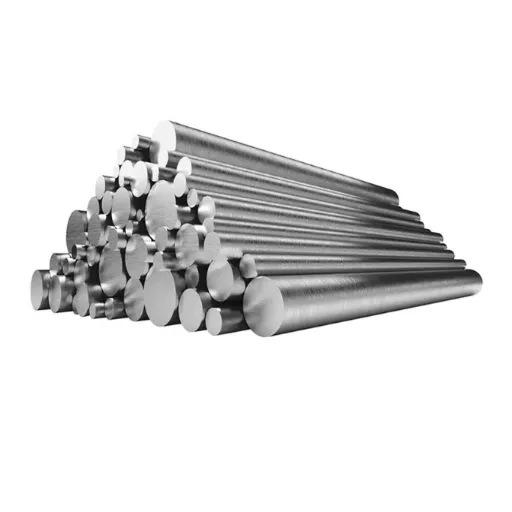
Factors to Consider When Selecting Bar Stock
While procuring a 1/2 inch round stainless steel bar, it is essential to consider many factors to ensure that the material is best suited and cost-effective for your application. Before anything else, ask yourself which grade of stainless steel is required since the various grades offer differing levels of corrosion resistance, strength, and machinability. Common grades include 304 and 316, 316 being more suitable for usage in environments with a very high exposure to corrosive elements such as saltwater.
Next come the dimensions and tolerances of the bar stock. In applications requiring precision fit or machining, exact sizes and tight tolerances are mandatory. Differences in surface finish may also be an issue: it could be essential for aesthetics or an enhanced wear resistance.
The other very important factor is mechanical properties, including tensile strength and hardness, which will affect the bar’s working performance under load or stress conditions and making it crucial to consider the capabilities of the materials being used to meet the end-use requirements. Last but not least, select a reliable supplier that complies with industry standards so your stock is high-quality and certified to be applied in your particular industry.
Cost-Effective Sourcing Strategies
To cost-effectively source products, one has to concentrate on balancing quality with cost, so as to satisfy the operational needs. First, try bulk-buying options for discounts and reduced per-unit costs. Having a trusted and established supplier network compensates for consistent prices over time, avoiding risks in supply-chain interruptions. Other options include alternative materials or suppliers that better fits your specifications and budget.
Another important approach would be to analyze historic procurement data identifying trends and opportunities for reductions in cost. This implies tracking both the price movements of raw materials and total cost of ownership anywhere from just upfront expenses. Technologies, such as procurement software and data analysis tools, will reveal visibility of supply chain inefficiencies, pinpointing areas requiring optimization.
Finally, ongoing dialogue and long-term neighborly partnerships with suppliers can also be helpful in negotiating contracts on favourable terms. Contracts centred around cooperation and mutual prosperity ensure a steady approach from high-grade materials at competitive pricing, which together ensure sustainable cost-effective practices.
Technical Considerations for Engineers and Fabricators
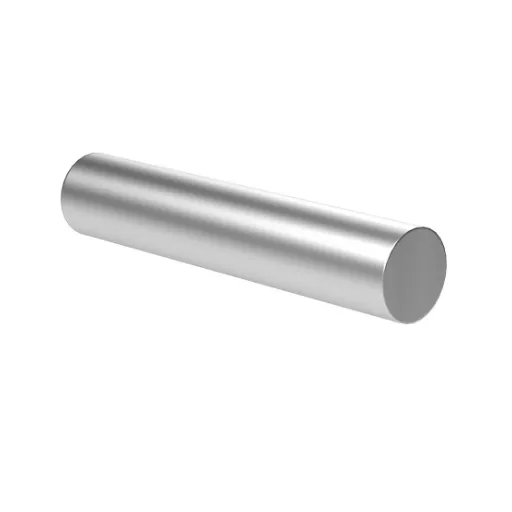
Understanding Austenitic Stainless Steels
Austenitic stainless steels are a class of alloys endowed with very good corrosion resistant qualities, having outstanding ductility and weldability. These stainless steels are FCC crystallographically-structured steels, the structure being stabilized with rather high chromium and nickel content as compared to other grades. Some of the commonly used grades in this category are 304 and 316 stainless steels, used for applications ranging from chemicals to food-grade equipment and even architectural structures.
Thanks to the relatively high chromium content, generally between 16-26%, austenitic stainless steels ensure better protection against oxidation and corrosion even withstanding the deleterious action of aggressive environments. The nickel content, which varies between 8 and 22%, stabilizes the austenitic structure so that it works equally well at low temperatures as well as at high temperatures. Some grades may also include molybdenum additions to improve resistance to pitting corrosion for a marine or chloride environment.
Another matter of significance to engineers would be the material’s non-magnetic nature in the annealed state, which can become of advantage in certain electromagnetic applications. The other thing one needs to consider is that due to a very high work-hardening rate, tooling and machining of these stainless steels ought to be done with purpose to avoid premature tool wear. The development in the matrix of alloying and processing has posed great challenges in expanding the frontiers of these versatile alloys, making them indispensable today.
Limitations and Challenges in Use
The very flexibility of austenitic stainless steel is a limitation of sorts. Stress corrosion cracking (SCC) may sometimes occur under specific environmental conditions, particularly in chloride-rich environments. This susceptibility can greatly impair service life when such exposure is inevitable in the application, giving rise to design considerations or preventive measures. Also, the price of austenitic stainless steel is relatively high compared to alternative materials, which in itself poses some restrictions, especially when working under tight budgets.
Machining and forming is next in line as a challenge because of its high work-hardening rate. For this reason, special tooling and machining techniques must be employed to optimize production, reduce tool wear, or guarantee precision throughout the manufacturing operations. Such kinds of requirements increase the time and cost, thus complicating its application for some industrial processes. Even welding of austenitic stainless steels presents problems, like a risk of sensitization compromising corrosion resistance in the affected weld zones.
Apart from these issues, I perceive it to still be essential in actual applications requiring high corrosion resistance and strength with durability. In fact, its limitations mostly underline the importance of proper design, handling, and the need for further advancements in materials science to optimize its performance. The hurdles notwithstanding, when applied properly and in innovative ways, the advantages far outweigh the challenges.
Best Practices for Handling and Processing
If best practices in handling and processing austenitic stainless steel are adhered to, maximum performance and longevity can be guaranteed. Begin by keeping fabrication operations clean to avoid any surface contaminants compromising the corrosion resistance. The use of carbon steel tools may deposit rust spots, so use only tools dedicated to stainless steel.
Heat input must be controlled during welding, so as to avoid any sensitization or conditions that cause precipitation of chromium carbides, thereby lessening corrosion resistances. Use low carbon grades such as 304L or titanium- or niobium-stabilized materials in high-temperature applications. Ensure adequate lubrication in forming or machining operations to prevent surface damage due to friction.
Finishing to the last detail is equally important where pickling and passivation restore the oxide film for better corrosion resistance. Inspection and maintenance become important in the early detection of stress or chemical exposure. Use these techniques, and you can have austenitic stainless steel living up to its expectations in all extreme applications.
References
- Ohio Tech: Discusses connectors for 1/2″ stainless steel round bars and their applications in balconies and rakes.
- Stanford University: Provides a stainless steel grade chart listing various grades and their chemical properties.
- Iowa State University: Features a laboratory study on the structural behavior of alternative dowel bars, including 1/2-inch joint width round steel bars.
- U.S. International Trade Commission: Publishes a report on stainless steel and alloy tool steel, including discussions on 1/2″ round bars.
- Lawrence Berkeley National Laboratory: Covers materials for cryogenic service, including the engineering properties of austenitic stainless steel bars.
- Click here to read more.


